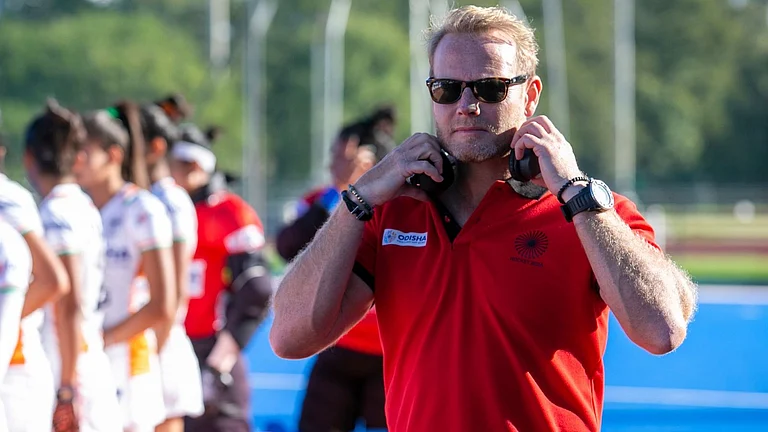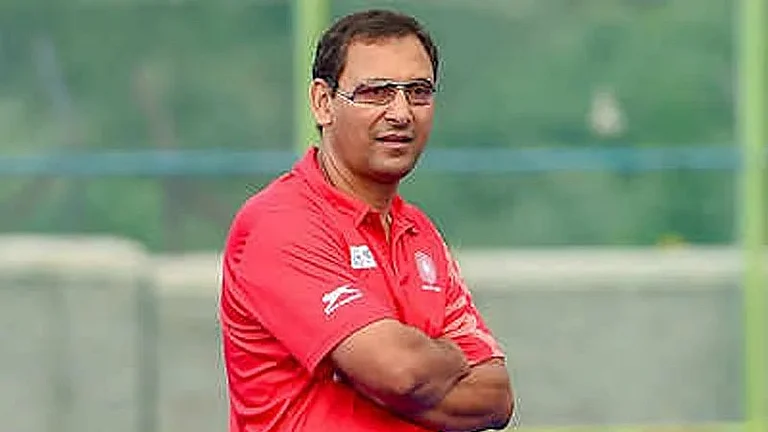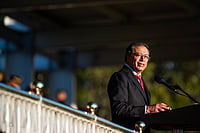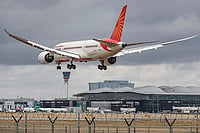Republic Day, a day of national importance, is observed on January 26 to celebrate the adoption of the Constitution in 1950. This day commemorates the implementation of the Constitution, which marks India's transition to a sovereign and republican state. The roots of Republic Day are tied to the struggle for independence from British rule.
Why We Celebrate Republic Day?
January 26 was chosen as Republic Day since it was on this day in 1929 when the Indian National Congress issued the Declaration of Indian Independence (Purna Swaraj), opposing the British Regime's dominion status.
The journey towards the Indian Constitution began after India gained independence on August 15, 1947, a date commemorated annually as Independence Day.
A committee, chaired by Dr. BR Ambedkar, was formed on August 29, 1947, to draft a permanent constitution. On November 4, 1947, the committee submitted the constitution to the Constituent Assembly.
Over the next two years, the Constituent Assembly held numerous sessions, adopting the Constitution on January 24, 1950. The constitution officially came into effect two days later, on January 26, 1950.
India's Constitution, initially comprising 1,45,000 words, is the world's lengthiest, amended 100 times since its adoption. It replaced the British Colonial Government of India Act (1935) as the governing text. On January 26, 1950, the Preamble to the Constitution came into effect, completing India's transition to a sovereign republic.
The Constitution grants fundamental rights to all citizens, regardless of religion, race, caste, sex, or place of birth, and outlines fundamental duties for every citizen.
“However Good A Constitution May Be, If Those Who Are Implementing It Are Not Good, It Will Prove To Be Bad. However Bad A Constitution May Be, If Those Implementing It Are Good, It Will Prove To Be Good.”Dr BR Ambedkar
How Is Republic Day Celebrated
Commencement
The festivities commence with the Prime Minister laying a floral wreath at the National War Memorial, previously at the Amar Jawan Jyoti Memorial in Delhi. This solemn act is followed by two minutes of silence to honour India's martyred soldiers.
After paying respects, the Prime Minister proceeds to the saluting dais at Kartavya Path in Delhi to witness the parade, where other dignitaries are already assembled. Subsequently, the President arrives, accompanied by the Chief Guest of the occasion.
Flag Unfurling and Anthem
Every Republic Day, the tricolour flag is tied with flowers on top of the flagpole and unfurled by the President. This moment is accompanied by the playing of the National Anthem, and the Indian Army's Artillery Regiment gives a 21-gun salute. It's important to note that the term "21-gun salute" doesn't involve actual guns. The 21-gun salute is performed with a designed cartridge or blank round that produces the sound of firing instead of actual shells being fired.
Flag Hoisting Vs Flag Unfurling
Unlike Independence Day, where the flag is hoisted, Republic Day sees the flag being unfurled. Though the words are often used interchangeably, they carry different meanings and symbolism.
On Independence Day, celebrated on August 15, the Prime Minister hoists the national flag at the Red Fort in Delhi, symbolising India's freedom from colonial powers and the re-establishment of its identity. The flag is initially tied to the lower part of the flagpole and then raised by the Prime Minister.
On Republic Day, marking the constitution's commemoration, the President unfurls the flag at the Kartavya Path in Delhi. As India was already a free country by the first Republic Day, the tradition continues, with the President unfurling the flag—tied as a bundle atop the flagpole—symbolising the nation's commitment to its constitutional principles.
Award Ceremony On Republic Day
During the Republic Day ceremony, the President of India honours officers of the police department and the armed forces for their outstanding courage in the field. Furthermore, other awards are presented to citizens who have shown courage in various other fields. The major award categories include:
Bharat Ratna
The Bharat Ratna stands as the highest civilian award, recognising outstanding achievements in any field. The Prime Minister recommends candidates to the President, and up to three Bharat Ratna Awards can be conferred in a calendar year. Official recommendations are not mandatory.
Padma Awards
The Padma Awards, comprising Padma Vibhushan, Padma Bhushan, and Padma Shri, honour individuals based on their achievements. Padma Vibhushan is the second-highest civilian award after the Bharat Ratna, followed by Padma Bhushan and Padma Shri.
Announced on the eve of Republic Day, the awards are presented by the President around March or April. Recipients receive a certificate (sanad) and a medal, along with a replica for ceremonial functions. On the day of the investiture ceremony, a commemorative brochure is distributed that includes brief information on each award winner.
Gallantry Awards
India's military personnel receive recognition through six gallantry awards:
Param Vir Chakra: The highest military decoration for exceptional valour during wartime.
Ashoka Chakra, Maha Vir Chakra, Kirti Chakra, Vir Chakra, and Shaurya Chakra: Honours for acts of bravery in descending order of precedence.
These gallantry awards are announced twice a year - first on the occasion of Republic Day and then on the occasion of Independence Day.
Republic Day Parade
The Republic Day Parade in Delhi, organised by the Ministry of Defence, Government of India, is the focal point of the three-day Republic Day celebrations, showcasing India’s military strength and cultural diversity.
This annual event commences at the Rashtrapati Bhavan (the President's residence), proceeds along the Rajpath (officially named Kartavya Path), and passes the India Gate. Typically starting at 9:30 AM after the 8:00 AM flag unfurling on January 26, the parade lasts approximately three hours.
A diverse array of regiments from the Indian Army, Navy, and Air Force, adorned in their finery and official decorations, participate in the march past. The President of India, as the Commander-in-Chief of the Indian Armed Forces, takes the salute. Eighteen to 24 regiments of the Indian Army, as well as the Navy and Air Force and a total of around five and around 12 contingents from various paramilitary forces and police, contribute to the parade.
Beyond being a display of military might, the parade serves as a vibrant showcase of India's rich culture. Uniformed soldiers march with precision, accompanied by displays of armoured vehicles and fighter jets in choreographed formations, creating a visual spectacle that resonates with the nation's heritage and strength.
Tableaux
Tableaux, in the context of Republic Day, refers to a collection of models or motionless figures representing scenes from stories or history.
During the Republic Day parade, states, different departments, and ministries utilise these tableaux to showcase their achievements, whether in cutting-edge technology and instruments or in the realm of history and culture.
Approximately 15 tableaux from the States and Union Territories are selected for inclusion in the Republic Day parade each year. Due to space constraints, not all submissions can be accommodated annually. However, an agreement ensures that every State and Union Territory gets an opportunity to present their tableau within a three-year cycle.
The selection process is overseen by an expert committee, operationalized by the Ministry of Defence. This panel consists of individuals from various disciplines, including art, culture, painting, sculpture, music, architecture, choreography, and more. They evaluate tableaux proposals received from states, Union territories, central ministries, and central departments in a series of meetings.
Beating Retreat
The Beating Retreat ceremony serves as the formal conclusion of Republic Day celebrations, taking place on January 29 following the January 26 Republic Day festivities.
Introduced to India in the 1950s, the Beating Retreat Ceremony is a military tradition organised by Section D of the Ministry of Defence. This solemn event involves the participation of bands from all three wings of the military—the Indian Army, Indian Navy, and Indian Air Force.
The ceremony starts a little before dusk, and as the sun begins to set, it concludes with the flags being lowered and all of Vijay Chowk, along with popular landmarks such as the Rashtrapati Bhavan, North and South Blocks, and India Gate, being silhouetted with lights.
Who is the chief guest for the Republic Day
Since 1950, India has extended invitations to the head of state or government of another country as the state guest of honour for Republic Day celebrations in New Delhi. The selection of the guest country is a result of careful consideration of strategic, economic, and political interests.
Indonesian President Sukarno was the first Chief Guest of India's first Republic Day parade on January 26, 1950. In 2024, Emmanuel Macron, the President of France, will visit India as the Chief Guest for the 75th Republic Day celebrations.
Historically, during the 1950s–1970s, India hosted numerous countries affiliated with the Non-Aligned Movement and the Eastern Bloc. In two instances, in 1968 and 1974, India welcomed two countries on the same Republic Day. However, in 2021 and 2022, India did not have a Chief Guest due to the Covid-19 pandemic.
The process of selecting the Chief Guest begins nearly six months before the event. The primary consideration is the nature of the relationship between India and the invited country.
The invitation to be the Chief Guest at the Republic Day parade demonstrates the utmost level of friendship between India and the invitee. The political, commercial, military, and economic interests of India play crucial roles in the decision-making process.
The Chief Guest of India’s Republic Day celebration is looked at as more than a mere ceremonial accord, as this plays a pivotal role in furthering and strengthening the ties between the two countries.


























